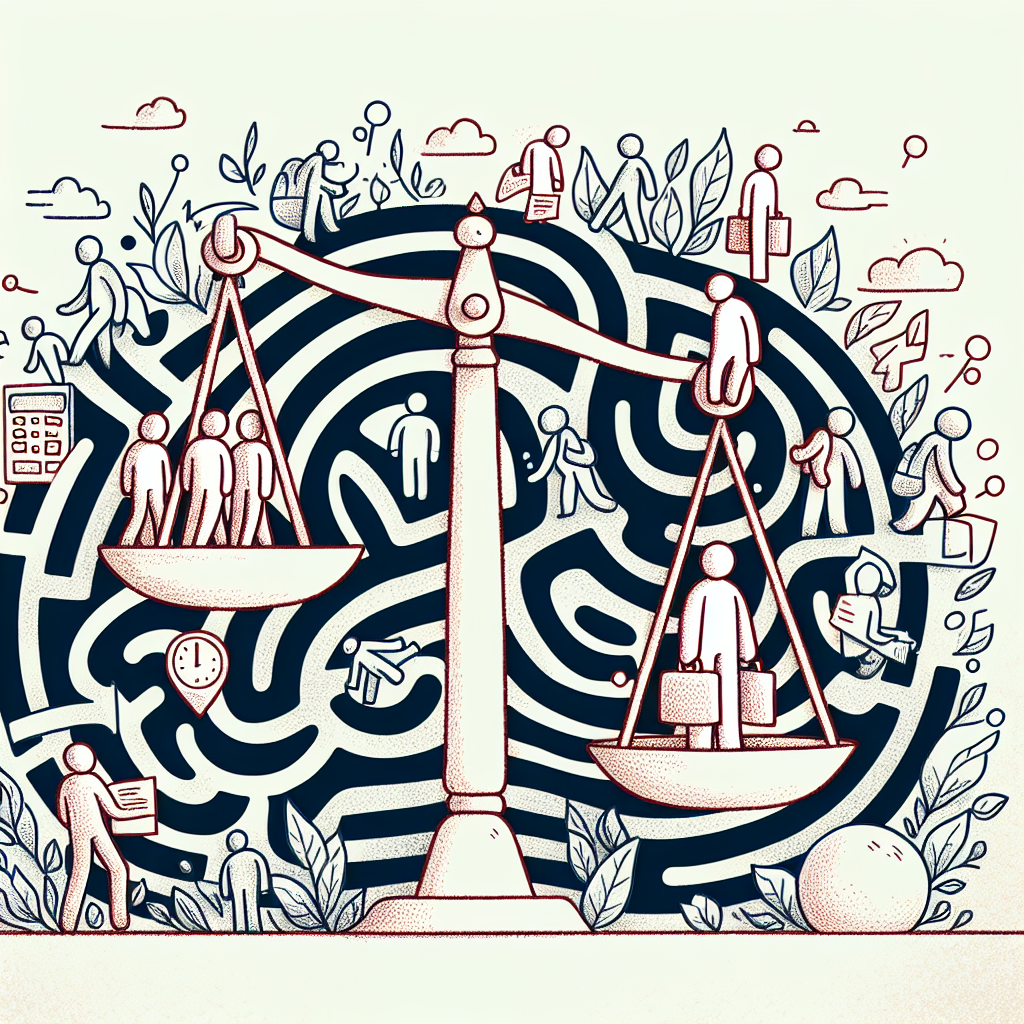Introduction
The landscape of U.S. college admissions is undergoing significant change heading into 2025. Driven by evolving social norms, shifting demographics, and new policy developments, the college admissions process is no longer what it was just a few years ago. These changes are altering how students approach applications and how institutions respond in kind.
Social factors such as increasing awareness around equity and access are influencing students' preferences and expectations. Demographic shifts, including a declining number of high school graduates in certain regions, are prompting colleges to adjust recruitment strategies. At the same time, policy changes—like the reconsideration of affirmative action, test-optional policies, and FAFSA simplification—are reshaping the admissions playing field.
Understanding college admissions trends 2025 is essential for students and families navigating the process, educators guiding applicants, and policymakers shaping future reforms. Keeping pace with these trends can help all stakeholders make informed decisions in a rapidly changing environment.

The Surge in College Applications
Overall Growth in Applications
The 2024–25 admission cycle saw a 4% increase in college applications, reflecting a continued uptick in interest and accessibility in higher education institutions (Inside Higher Ed - Applications Rise). Key drivers of this growth include the widespread adoption of test-optional policies, which have lowered entry barriers for many students. Additionally, colleges have expanded their digital outreach strategies, making it easier for prospective students to engage with institutions remotely. Simplified application platforms have also contributed by streamlining the submission process.
Growth Among Underrepresented Minority (URM) Applicants
Applications from underrepresented minority (URM) students rose by 12%, significantly outpacing the 2% increase among non-URM applicants in the same cycle (Inside Higher Ed - Applications Rise). This surge in URM participation can be attributed to expanded access initiatives aimed at closing equity gaps, as well as the continued presence and visibility of diversity, equity, and inclusion (DEI) programs—even amid legal and political shifts that have challenged such initiatives. These efforts appear to be resonating with students from historically marginalized backgrounds, contributing to evolving college admissions trends in 2025.

Changing Demographics of Applicants
Rise of Financially Independent and Adult Learners
One of the most notable college admissions trends 2025 is the sharp increase in financially independent and adult learners applying to college. Over the past eight years, there has been more than a twofold increase in the number of financially independent applicants. Even more striking, applicants over the age of 23 have risen by 223% between the 2016–17 and 2023–24 academic years (Inside Higher Ed - Adult and Independent Applicants).
Several factors contribute to this shift. The growth of flexible online and hybrid learning formats has made higher education more accessible for adults balancing work and family responsibilities. Additionally, many individuals are returning to school due to career changes or economic instability, seeking credentials that will make them more competitive in the job market.
Expansion of Nontraditional Enrollment Paths
Another key aspect of college admissions trends 2025 is the increased enrollment in nontraditional academic paths. Two-year colleges have seen a significant rise in students pursuing certificate programs and short-term credentials (Inside Higher Ed - Undergrad Enrollment). These programs often provide more affordable and faster pathways to employment than traditional four-year degrees.
This shift is prompting a reevaluation of what defines a “college student.” As more learners pursue alternative credentials, colleges and policymakers are rethinking how to support and categorize these students within the broader higher education system.

Admissions Outcomes and Equity Challenges
Post-Affirmative Action Landscape
A key development shaping college admissions trends in 2025 is the aftermath of the 2023 Supreme Court decision that ended race-conscious admissions policies. This ruling has significantly altered how institutions approach diversity in their applicant pools. Despite a noticeable rise in applications from Black and Hispanic students, their actual admission rates have declined, raising concerns about widening equity gaps (Inside Higher Ed - Admission Rates Decline). The disconnect between application volume and admission outcomes has intensified scrutiny over institutional commitments to diversity.
Institutional Responses
In response to the legal constraints on race-conscious admissions, colleges are adopting alternative strategies to promote equity. Many institutions are shifting focus to socioeconomic indicators, first-generation college status, and geographical data such as zip-code-based metrics to identify and support underserved applicants. Holistic admissions practices, which consider a broader range of student experiences and backgrounds, are becoming more widespread. Additionally, targeted outreach efforts to historically underrepresented communities are on the rise, as institutions seek to maintain diverse and inclusive student bodies within the post-affirmative action landscape.

Enrollment Trends and Institutional Adaptation
Growth in Undergraduate Enrollment
Undergraduate enrollment saw a 3.5% year-over-year increase from spring 2024 to spring 2025, marking a notable shift in college admissions trends 2025 (Inside Higher Ed - Undergrad Enrollment). This growth was largely concentrated in two-year and public institutions, driven by heightened interest in career-aligned academic programs. Students are increasingly selecting institutions that offer clear pathways to employment, signaling a demand for practical, outcomes-focused education.
The Role of Community Colleges and Credential Programs
Community colleges and short-term credential programs are playing a greater role in shaping college admissions trends 2025. There is rising demand for workforce-relevant credentials that can be earned quickly and stack into further education. Stackable degrees and well-structured transfer pathways are becoming essential tools for students looking to combine affordability with long-term career mobility. Institutions are responding by expanding programs that align with labor market needs and by strengthening articulation agreements to support seamless student transitions between programs and institutions.

The Looming Enrollment Cliff and Future Outlook
Projected Decline in College-Age Population
One of the most significant college admissions trends 2025 is the anticipated demographic shift that will affect enrollment patterns for decades. The number of 18-year-old high school graduates in the United States is expected to peak at around 3.9 million in 2025, followed by a steady decline of approximately 13% by 2041 (Inside Higher Ed - Demographics Decline). This drop in the traditional college-age population poses a serious threat to the sustainability of many institutions, particularly small and rural colleges that rely heavily on local student populations.
Strategic Responses by Institutions
In response to this projected enrollment cliff, colleges and universities are adopting a range of strategies to maintain enrollment levels. A key college admissions trend in 2025 is the expansion into adult and online markets, enabling institutions to reach non-traditional students and working professionals. Additionally, many schools are intensifying efforts to recruit international and out-of-state students to offset domestic demographic losses. Some institutions are also pursuing mergers or facing closures as applicant pools shrink and financial pressures mount. These responses reflect a broader shift in how colleges are adapting to long-term changes in the higher education landscape.

Technology and Accessibility in Admissions
Continued Rise of Test-Optional Policies
One of the most significant college admissions trends 2025 continues to be the widespread adoption of test-optional policies. More institutions are choosing to make SAT and ACT scores optional, leading to a noticeable increase in application volume. This shift has opened doors for a broader range of students, particularly those from underrepresented or low-income backgrounds who may have previously been disadvantaged by standardized testing requirements.
However, the long-term effectiveness of test-optional policies in truly leveling the playing field remains a topic of debate. Critics argue that without standardized metrics, colleges may lean more heavily on subjective or resource-dependent aspects of the application, such as extracurricular activities or essays, which can still reflect socio-economic disparities.
AI and Digital Tools in Recruitment
Colleges are increasingly leveraging artificial intelligence and digital tools to improve accessibility and streamline the admissions process. AI-powered chatbots are now commonly used to answer applicant questions 24/7, reducing barriers for students who may not have direct access to college counselors. Virtual campus tours allow prospective students to explore universities remotely, making the experience more inclusive for those unable to travel.
Predictive analytics help institutions identify students who are more likely to enroll, enabling more targeted and efficient recruitment strategies. Additionally, these tools support the personalization of outreach efforts, tailoring communication and application assistance to the individual needs and interests of each student—a trend that reflects the broader movement toward student-centric admissions practices within the landscape of college admissions trends 2025.

Implications for Students and Families
Navigating a More Competitive Landscape
As college admissions trends 2025 point toward increased selectivity, students and families must adjust their strategies accordingly. Early planning is more critical than ever, with timelines for standardized testing, extracurricular involvement, and financial preparations starting as early as middle school. In this more competitive environment, financial literacy is becoming a core component of the college planning process, helping families understand the long-term costs and benefits of different education paths.
Equally important is the ability to craft a personal narrative that stands out. Admissions officers are placing greater value on authenticity, looking beyond test scores and GPAs to understand who a student is and how they might contribute to the campus community. This means students should focus on developing their interests deeply and communicating their stories clearly and honestly through essays and interviews.
Shifting Value Propositions of Higher Education
In light of college admissions trends 2025, the perceived value of a college degree is evolving. More families are considering return on investment (ROI) when selecting schools, weighing tuition costs against post-graduation employment outcomes. This ROI-focused decision-making leads to greater attention on schools with strong career services and job placement rates.
Additionally, alternative pathways such as internships, apprenticeships, and partnerships with employers are playing a larger role in the decision-making process. These opportunities not only enhance employability but also provide a practical understanding of potential career paths. As a result, families are increasingly evaluating colleges based on their ability to provide real-world experiences that align with students’ long-term goals.

Conclusion
College admissions trends 2025 reveal a landscape shaped by both expanding access and emerging complexities. While efforts to promote inclusion have opened doors for a broader range of students, new challenges such as shifting demographics, changing policies, and evolving assessment criteria require careful navigation.
For students, success in this environment depends on adaptability, a well-informed approach, and clarity in goals and decision-making. Understanding the latest trends and requirements is essential to making strategic choices throughout the application process.
Colleges and universities, meanwhile, must find a sustainable path that upholds equity while managing enrollment pressures and responding to policy changes. The balance between maintaining institutional viability and fostering diverse, inclusive student bodies will remain a central focus of college admissions trends in 2025.














